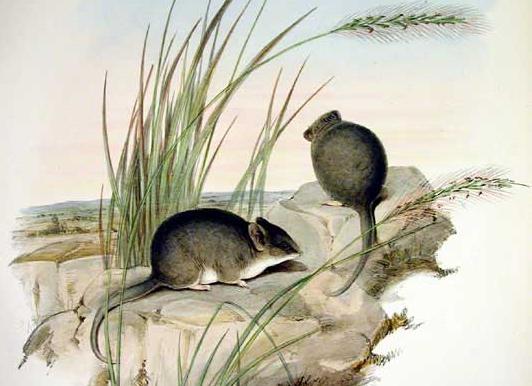It is hard to guess what a Stripe-faced dunnart weights. But we have the answer:
An adult Stripe-faced dunnart (Sminthopsis macroura) on average weights 24 grams (0.05 lbs).
The Stripe-faced dunnart is from the family Dasyuridae (genus: Sminthopsis). They can live for up to 4.83 years. When reaching adult age, they grow up to 9.5 cm (0′ 4″). On average, Stripe-faced dunnarts can have babies 2 times per year with a litter size of 7.
As a reference: An average human weights in at 62 kg (137 lbs) and reaches an average size of 1.65m (5′ 5″). Humans spend 280 days (40 weeks) in the womb of their mother and reach around 75 years of age.

The striped-faced dunnart (Sminthopsis macroura) is a small, Australian, nocturnal, “marsupial mouse,” part of the family Dasyuridae. The species’ distribution occurs throughout much of inland central and northern Australia, occupying a range of arid and semi-arid habitats.While the species has a broad distribution range, it has been declining across much of Australia, including the western region of New South Wales (NSW). This is due to several threatening processes, primarily habitat degradation.This has led to the NSW Office of Environment and Heritage listing the species as ‘vulnerable’. The species is not listed on the Environment Protection and Biodiversity Conservation Act 1999 (EPBC Act). The International Union for Conservation of Nature (IUCN) Red List of Threatened Species list the species as of ‘least concern’.Recent genetic studies have discovered that this dunnart species is in fact three distinct species that over several million years diverged from each other. However, because they are difficult to distinguish, they tend to be treated as a single species.The three subspecies are as follows:Sminthopsis macroura macroura in central, eastern, and western AustraliaS.m. stalkeri in central northern AustraliaS.m. froggatti in the Kimberley region
Animals of the same family as a Stripe-faced dunnart
We found other animals of the Dasyuridae family:
- Common planigale with a weight of 12 grams
- Bronze quoll with a weight of 896 grams
- Kangaroo Island dunnart with a weight of 22 grams
- Wongai ningaui with a weight of 9 grams
- Narrow-striped marsupial shrew with a weight of 124 grams
- Long-nosed dasyure with a weight of 54 grams
- Tasmanian devil bringing 8.2 kilos (18.08 lbs) to the scale
- Woolley’s false antechinus with a weight of 43 grams
- Lesser hairy-footed dunnart with a weight of 11 grams
- Long-tailed dunnart with a weight of 18 grams
Animals with the same weight as a Stripe-faced dunnart
As a comparison, here are some other animals that weight as much as the Sminthopsis macroura:
- Steppe lemming bringing 20 grams to the scale
- Least pygmy squirrel bringing 21 grams to the scale
- Western jumping mouse bringing 27 grams to the scale
- Lesser Wilfred’s mouse bringing 22 grams to the scale
- Wrinkle-lipped free-tailed bat bringing 21 grams to the scale
- Woolly dormouse bringing 25 grams to the scale
- Tufted pygmy squirrel bringing 24 grams to the scale
- Mauritian tomb bat bringing 27 grams to the scale
- Hairy-eared cerrado mouse bringing 24 grams to the scale
- Pacific jumping mouse bringing 27 grams to the scale
Animals with the same litter size as a Stripe-faced dunnart
Here is a list of animals that have the same number of babies per litter (7) as a Stripe-faced dunnart:
- Stolička’s mountain vole
- Washington ground squirrel
- Ooldea dunnart
- Lutrine opossum
- Little ground squirrel
- Steppe polecat
- Swamp antechinus
- Fat-tailed dunnart
- Long-tailed ground squirrel
- Vinogradov’s jird
Animals with the same life expectancy as a Stripe-faced dunnart
Completely different animals, but becoming as old as a Stripe-faced dunnart:
- Dark kangaroo mouse with an average maximal age of 5.42 years
- African striped weasel with an average maximal age of 5.17 years
- Eastern barred bandicoot with an average maximal age of 5.5 years
- Northern grasshopper mouse with an average maximal age of 5 years
- Northern common cuscus with an average maximal age of 4 years
- Greater bulldog bat with an average maximal age of 5.75 years
- Giant golden mole with an average maximal age of 4 years
- Dobson’s shrew tenrec with an average maximal age of 5.58 years
- Bank vole with an average maximal age of 4.83 years
- Cave nectar bat with an average maximal age of 5 years
